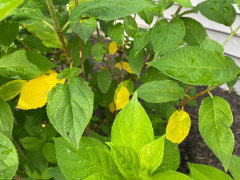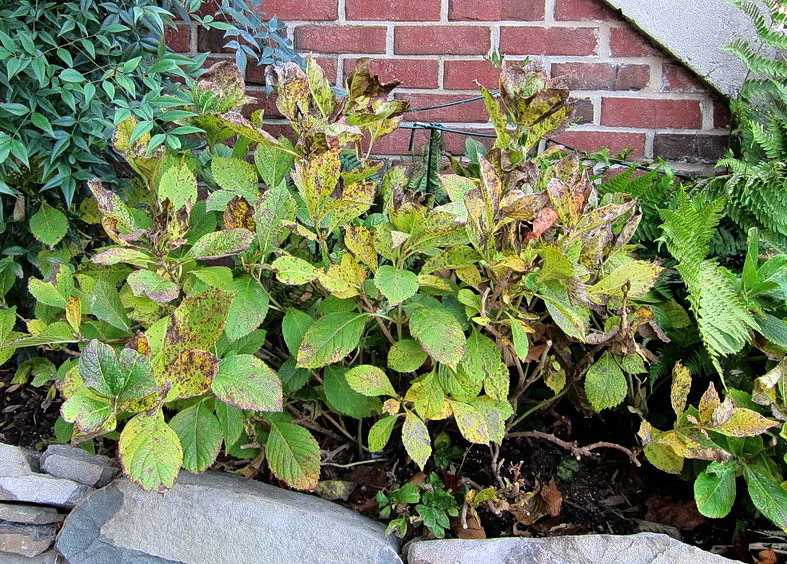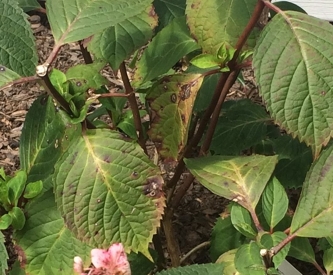The Main Principles Of Hydrangea Leaves Turning Yellow
Table of ContentsNot known Facts About Hydrangea Leaves Turning YellowThe smart Trick of Hydrangea Leaves Turning Yellow That Nobody is DiscussingThe Buzz on Hydrangea Leaves Turning Yellow5 Easy Facts About Hydrangea Leaves Turning Yellow ExplainedThe Ultimate Guide To Hydrangea Leaves Turning Yellow
The container should be huge enough so the plant can expand and obtain all of the water and nutrients it requires. Area the container on a deck, or in an unethical spot on a patio area. You can also change the plant with a panicle hydrangea. Panicles love the full sunlight.So, despite the variety, strategy in advance and make certain your plant has a lot of defense from the wind. You have a few choices right here. You can hair transplant to a new place, or you can develop a wind barrier utilizing one more plant, or secure fencing. To create a wind barrier you could, or a bush to obstruct the wind.
Decorative grass, Rose of Sharon, or Holly shrubs are just a few ideas of plants you might utilize to obstruct the wind. If you require to hair transplant, locate a place in your yard that is well protected from sunlight and wind. Hair transplanting is best performed in the autumn or the spring.
The plants location is the most vital variable when it comes to obtaining well established and appropriate growth. With a little planning on growing place and proper upkeep, you'll be able to guarantee your hydrangeas!.
The 3-Minute Rule for Hydrangea Leaves Turning Yellow

Nonetheless, you can rescue the plant from yellow leaves by using it the appropriate light and positioning. If your plant gets yellow fallen leaves, move it to a dark area. Place Hydrangea plants inside near an east-facing window. Dapple the plant with drapes or UV protection sheets to obstruct direct warm.
, and temperature changes can create yellowing leaves and brownish areas. If it gets as well warm, the edges of the leaves end up being yellow, transform brown and develop a crispy appearance.

Not known Details About Hydrangea Leaves Turning Yellow
However, yellow leaves in Hydrangeas are the very first indications of condition problem, often followed by black spots, browning, goes down, and wilting. Separate the infected or pest-infested plant from the healthy and balanced plants to stop condition spread. If it is a yard plant, eliminate all the infected leaves using sanitized tools and cleanse up all the particles.
Cutting off aids Hydrangea color unnecessary weight and coverage, allowing the development of new leaves. The very best time to trim Hydrangeas is spring when the plant is ready to grow vegetation for the next season. Evaluate for invested or unhealthy fallen leaves and reduce the base of a stalk that signs up with the leaves and stem.
Prevent cutting healthy and balanced or green fallen leaves, and do not eliminate even more than 25% of the plant's foliage. The primary factor behind the red leaves in Hydrangea is inadequate soil or ecological conditions.
Repot the plant each year in spring or every 2 years if the development Learn More Here rate is slow-moving.
Some Ideas on Hydrangea Leaves Turning Yellow You Should Know

There are six main factors why this might take place:: The plant does not get enough sunlight.: The origins are either as well wet or also dry.: The plant is too cold.: The dirt is not acidic or alkaline enough for the hydrangea.: The plant isn't getting the ideal nutrients it needs to remain healthy.
Each factor impacts the plant in a manner that can be dealt with if we comprehend how to look after hydrangeas the proper way. When we discuss insufficient light for hydrangeas, we mean that the plant isn't obtaining adequate sunlight. Hydrangeas favor brilliant light, look at this web-site yet not direct, scorching sunlight. They typically thrive finest with morning sun and mid-day shade.
Without adequate sunshine, the leaves can transform yellow, the plant can come to be weak, and it might create less blooms. To guarantee a hydrangea obtains adequate light, it ought to be positioned i thought about this in a place where it can delight in the early morning light and be shielded from the intense afternoon sun. Overwatering is when a hydrangea plant obtains even more water than it requires.
Yellow fallen leaves might be a sign that the plant is getting as well much water. On the various other hand, dehydration takes place when the plant does not obtain adequate water.
The Facts About Hydrangea Leaves Turning Yellow Uncovered
This trouble is typical in the autumn as the weather condition changes or if a hydrangea is planted in a place where it does not get enough heat from the sunlight. It is very important to know the right problems for hydrangeas to prevent low-temperature tension. Many hydrangeas expand ideal in zones 6 to 9, where the climate is milder.
It is very important to know that this sort of yellowing is different from the yellowing triggered by issues like excessive water or otherwise sufficient light. If the yellow fallen leaves are mostly at the base of the plant and the rest of the plant looks healthy and balanced, it could simply imply that the fallen leaves are just getting old.